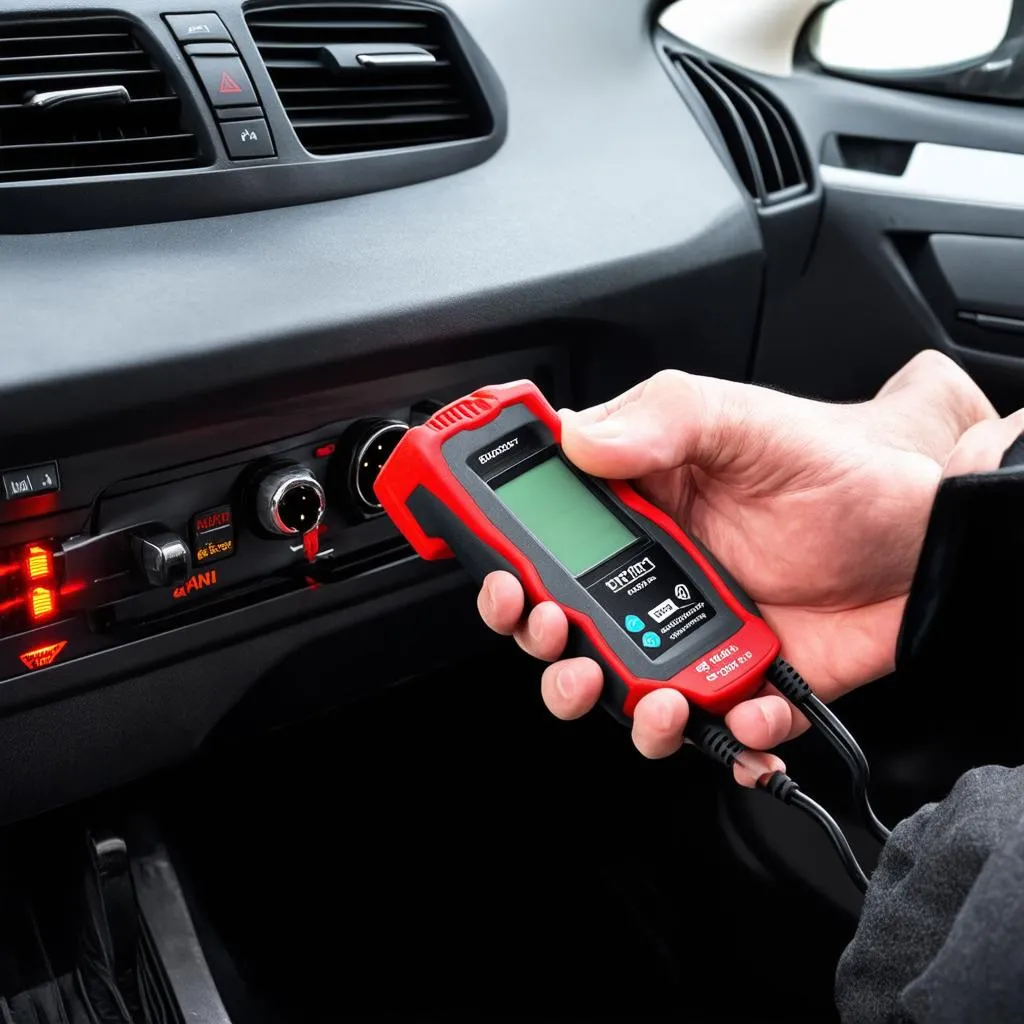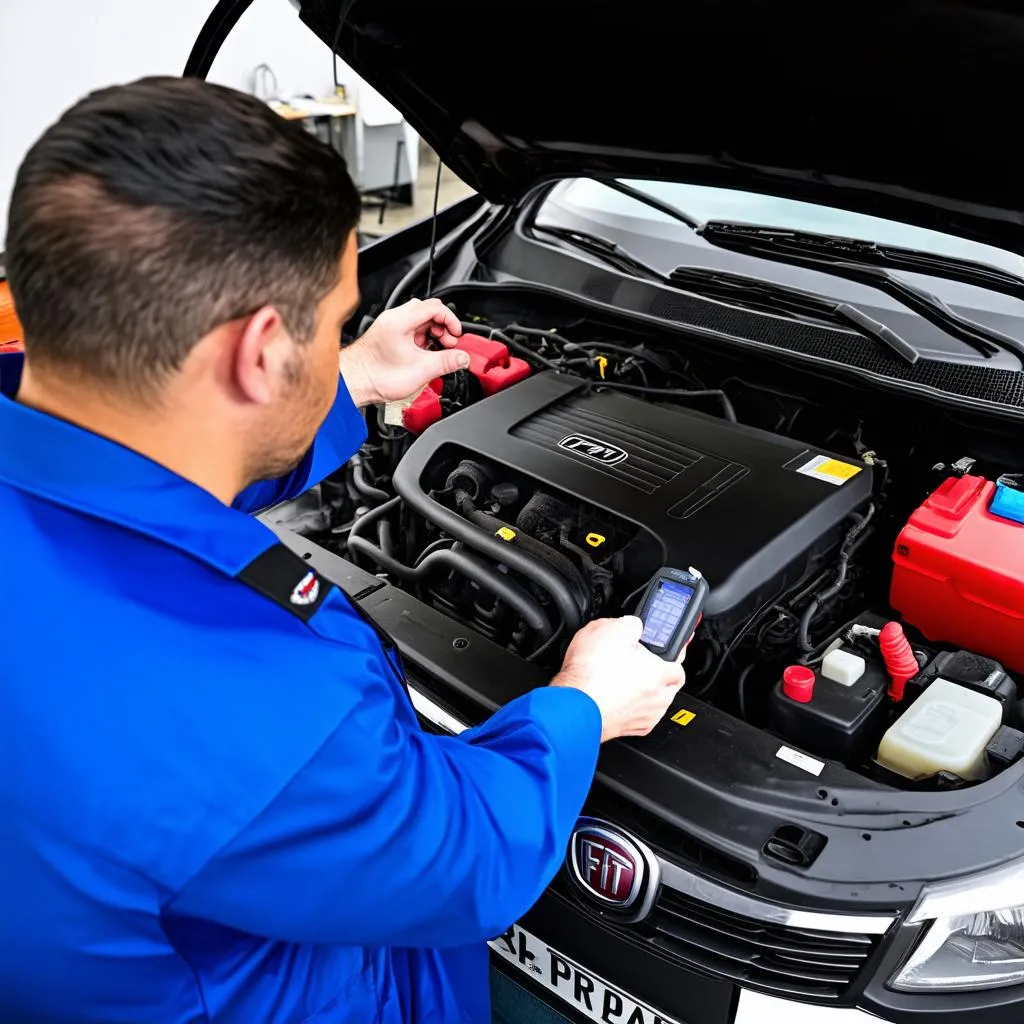Have you ever been driving your trusty Fiat down the road, enjoying the Italian craftsmanship, when suddenly, a warning light flashes on your dashboard? Your heart skips a beat. What does it mean? Is it something serious? Before you start picturing worst-case scenarios, remember the On-Board Diagnostics (OBD) system, a guardian angel for your car, ready to communicate any issues. In this article, we delve into the world of Fiat Obd Fault Codes, demystifying these cryptic messages and empowering you to take control.
What are Fiat Obd Fault Codes and Why Should You Care?
Imagine walking into a doctor’s office, unable to articulate your symptoms. Frustrating, right? That’s essentially what your Fiat experiences when something goes wrong. The OBD system acts as the bridge between your car’s brain and yours, using standardized codes to communicate problems.
From a mechanic’s perspective, these codes are lifesavers, offering valuable clues for diagnosing and fixing issues efficiently. For a Fiat owner in San Francisco, ignoring these codes is like neglecting a nagging cough – it might seem harmless initially, but it could snowball into costly repairs down the line. Let’s say your Fiat 500 throws a code P0171, indicating a lean fuel mixture. Ignoring this could lead to a damaged catalytic converter – a hefty expense you could have avoided by addressing the issue early on.
Unraveling the Code: Types of Fiat Obd Fault Codes
Think of OBD codes as a universal language, much like how English connects people worldwide. Fiat, being part of the global automotive industry, utilizes these standardized codes, making it easier for mechanics, regardless of their location – be it a bustling workshop in New York City or a quiet garage in rural Montana, to understand your car’s woes.
Primarily, you’ll encounter two types of Fiat OBD fault codes:
- Powertrain (P) Codes: These relate to the engine, transmission, and associated emissions systems. For instance, a P0302 code points to a misfire in cylinder 2.
- Body (B) Codes: These involve components like airbags, power windows, and central locking. A B1000 code might indicate a fault in the airbag system.
 OBD Scanner plugged into a Fiat
OBD Scanner plugged into a Fiat
Common Fiat Obd Fault Codes and Their Meanings
While the list of potential codes is extensive, certain ones pop up more frequently than others. Here’s a glimpse into some common Fiat OBD fault codes and their possible interpretations:
- P0400: Exhaust Gas Recirculation (EGR) Flow Malfunction – This could point to a clogged EGR valve, a common issue in Fiats, especially in models like the 500L and the 124 Spider.
- P0138: O2 Sensor Circuit High Voltage (Bank 1, Sensor 2) – This suggests an issue with the oxygen sensor, responsible for monitoring exhaust gases and ensuring optimal engine performance.
- U0100: Lost Communication with Control Module – This indicates a potential communication breakdown between different modules in your car, potentially caused by wiring issues or a faulty module.
Troubleshooting Fiat Obd Fault Codes: What to Do When the Light Comes On
Remember that panicking is never the solution. Instead, consider these steps:
- Stay Calm and Assess: Has your car’s performance changed? Do you notice any unusual noises or smells?
- Read the Code: Purchase an affordable OBD-II scanner online or from an auto parts store. Connect it to your Fiat’s OBD port (usually located under the dashboard on the driver’s side) and read the code.
- Research the Code: Use reputable online resources to understand the code’s meaning and potential causes.
- Consult a Mechanic: While some issues might seem straightforward, it’s always best to consult a qualified mechanic, especially for complex repairs.
 Mechanic inspecting a Fiat engine
Mechanic inspecting a Fiat engine
Beyond the Codes: Proactive Measures for a Healthy Fiat
“An ounce of prevention is worth a pound of cure.” This adage holds true for your Fiat as well. Here are some tips from renowned Fiat specialist, Dr. Marco Rossi, author of “The Complete Guide to Fiat Maintenance”:
- Regular Servicing: Adhere to Fiat’s recommended service intervals.
- Quality Parts: Always use genuine Fiat parts or high-quality aftermarket alternatives.
- Mindful Driving: Avoid aggressive driving habits that can strain your car’s engine and other components.
Have More Questions? We’re Here to Help!
Still, feel puzzled by your Fiat’s OBD fault codes? Don’t worry! Our team of automotive experts is just a message away. Contact us via Whatsapp at +84767531508 for personalized assistance and guidance on diagnostic tools and repairs. We’re available 24/7 to help you decipher those codes and get your Fiat back on the road in tip-top shape!
Keep Exploring the World of Fiat
Interested in learning more about your Fiat? Check out these related articles:
- Understanding Your Fiat Punto’s OBD Socket
- Common Fiat OBD Error Codes
- KF OBD: Your Key to Fiat Diagnostics
Remember, knowledge is power. By understanding your Fiat’s OBD fault codes, you become an informed owner, capable of making decisions that keep your Italian stallion running smoothly for years to come.